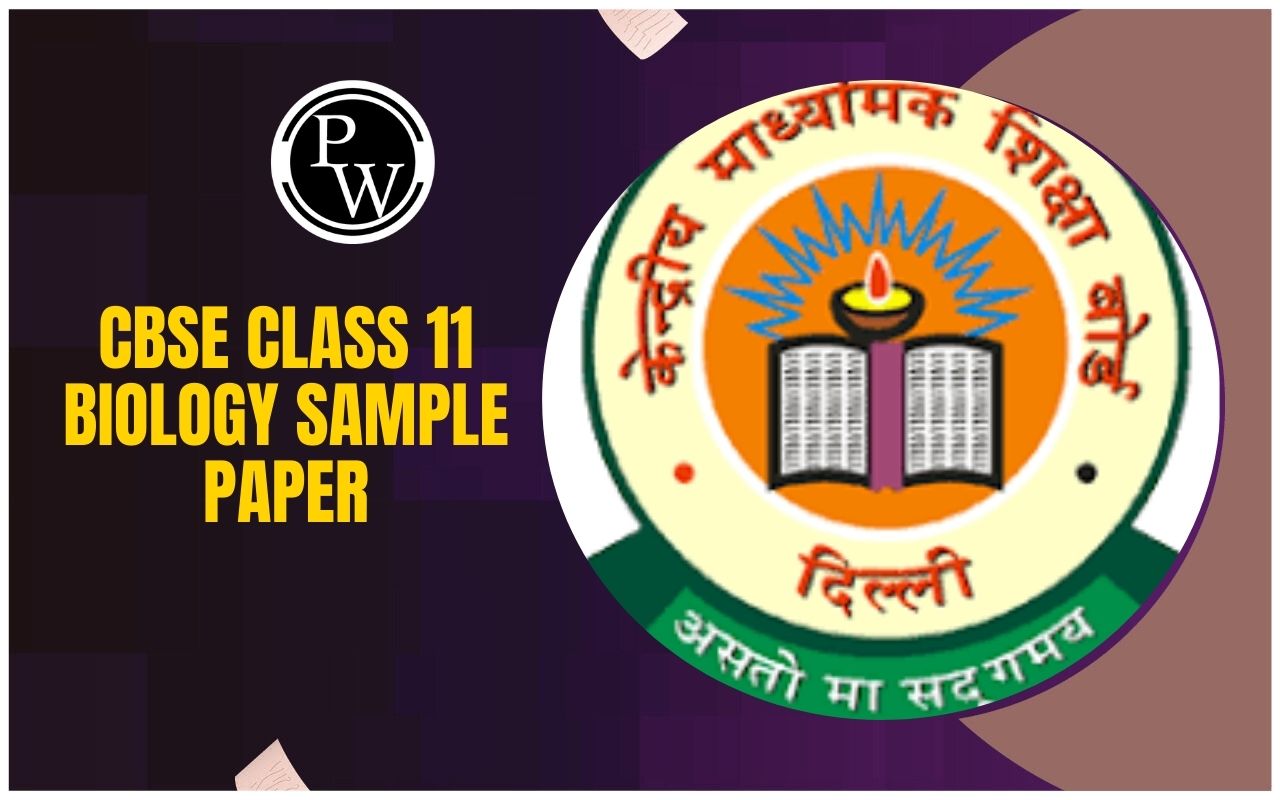
NCERT Solutions for Class 11 Biology Chapter 8: Chapter 8 of NCERT Class 11 Biology, "Cell: The Unit of Life," delves into the structural and functional aspects of the cell, the fundamental unit of life. It discusses the discovery of cells, cell theory, and types of cells—prokaryotic and eukaryotic.
The chapter explores the structure and functions of cell organelles like the nucleus, mitochondria, endoplasmic reticulum, and ribosomes, highlighting their roles in cellular processes. It also explains the plasma membrane, cell wall, and cytoplasm, emphasizing the cell’s role in maintaining life. This chapter forms the cornerstone for advanced biological studies and is crucial for board and competitive exam preparation.NCERT Solutions for Class 11 Biology Chapter 8 Overview
Chapter 8 of NCERT Class 11 Biology, "Cell: The Unit of Life," explores the fundamental unit of life, the cell, covering its discovery, cell theory, and types prokaryotic and eukaryotic. It explains the structure and functions of cell organelles like the nucleus, mitochondria, and ribosomes, alongside the plasma membrane and cytoplasm. Understanding this chapter is essential as it builds the foundation for cellular biology, molecular biology, and genetics. It equips students with knowledge critical for comprehending life processes, making it invaluable for board exams, NEET, and other competitive exams. Mastery of this topic is key for a strong grasp of advanced biological concepts.NCERT Solutions for Class 11 Biology Chapter 8 PDF Download
Chapter 8 of NCERT Class 11 Biology, "Cell: The Unit of Life," focuses on the structure, types, and functions of cells, the basic unit of life. It covers key topics like cell theory, organelles, and their roles in sustaining life processes. Below, we have provided a detailed PDF with comprehensive NCERT solutions to help students understand and master this vital chapter. Download the PDF now for free and excel in your exams!NCERT Solutions for Class 11 Biology Chapter 8 PDF
NCERT Solutions for Class 11 Biology Chapter 8 Cell: The Unit of Life
Below is the NCERT Solutions for Class 11 Biology Chapter 8 Cell: The Unit of Life -1. Which of the following is not correct?
(a) Robert Brown discovered the cell.
(b) Schleiden and Schwann formulated the cell theory.
(c) Virchow explained that cells are formed from pre-existing cells.
(d) A unicellular organism carries out its life activities within a single cell.
Solution:
The answer is (a) Robert Brown discovered the cell It is incorrect because Robert Brown discovered the nucleus in the cell.2. New cells generate from
(a) bacterial fermentation
(b) regeneration of old cells
(c) pre-existing cells
(d) abiotic materials
Solution:
The answer is (c) pre-existing cells3. Match the following
| Column I | Column II |
| (a) Cristae | (i) Flat membranous sacs in stroma |
| (b) Cisternae | (ii) Infoldings in mitochondria |
| (c) Thylakoids | (iii) Disc-shaped sacs in Golgi apparatus |
Solution:
| Column I | Column II |
| (a) Cristae | (ii) Infoldings in mitochondria |
| (b) Cisternae | (iii) Disc-shaped sacs in Golgi apparatus |
| (c) Thylakoids | (i) Flat membranous sacs in stroma |
4. Which of the following is correct?
(a) Cells of all living organisms have a nucleus.
(b) Both animal and plant cells have a well-defined cell wall.
(c) In prokaryotes, there are no membrane-bound organelles.
(d) Cells are formed de novo from abiotic materials
Solution:
The answer is (c) In prokaryotes, there are no membrane-bound organelles.5. What is a mesosome in a prokaryotic cell? Mention the functions that it performs.
Solution:
A mesosome in a prokaryotic cell is a folded, membranous structure formed by the invagination of the plasma membrane. It increases the surface area for enzymatic activities. Functions include aiding in cell wall formation , DNA replication , distribution to daughter cells , and facilitating respiration and secretion processes in prokaryotic cells.6. How do neutral solutes move across the plasma membrane? Can the polar molecules also move across it in the same way? If not, how are these transported across the membrane?
Solution:
Because they are lipid-soluble, the neutral solutes are able to penetrate the lipid bilayer. No, polar molecules need specific hydrophilic regions to get through the plasma membrane; they cannot do so in the same manner as neutral solutes. Ions, channels, permeases, and active transport that uses ATP are the three different ways that they are carried.7. Name two cell organelles that are double membrane-bound. What are the characteristics of these two organelles? State their functions and draw labelled diagrams of both.
Solution:
Two organelles that are double membrane-bound are i) Mitochondria ii) ChloroplastsCharacteristics of mitochondria
The outer and inner membranes of the mitochondrion, which is a double membrane-bound structure, clearly separate its lumen into two watery compartments: the outer compartment and the inner compartment.- Mitochondria are semi-autonomous as they possess their own DNA.
- Mitochondria are the place of aerobic respiration.

Characteristics of Chloroplasts
- Variously shaped in lower plants and disc-shaped in higher plants, they are present in euglenoids and plants.
- They contain particular pigments that give the plants' leaves colour.
- Each chloroplast has its own DNA.
- Pigments aid in photosynthesis by capturing sunlight.
- It is made up of thylakoids, which are membrane-flattened sacs found in their matrix. Thylakoids, often referred to as Gana, are stacked at specific places.

8. What are the characteristics of prokaryotic cells?
Solution:
The characteristics of prokaryotic cells are listed below:- The nuclear membrane is absent, and the genetic material is not enclosed by an envelope. The naked DNA is found to be coiled in the cytoplasm and is referred to as a genophore or nucleoid
- They lack membrane-bound organelles and membrane-bound nucleus
- The cell lumen is filled with a fluid known as cytoplasm
- Prokaryotic DNA is situated in the nucleoid of the cell
- The prokaryotic cell wall acts as a layer of protection and helps in maintaining cell shape
- The ribosome is the only cytoplasmic organelle that is found in prokaryotic cells
9. Multicellular organisms have a division of labour. Explain.
Solution:
Organs and organ systems are formed by the arrangement of cells to produce tissues. A cell is a self-sufficient structure that can perform tasks alone. Therefore, in order to perform various tasks with greater efficiency and survivability, the division of labour is necessary.10. The cell is the basic unit of life. Discuss in brief.
Solution:
Organ systems are the building blocks of all plant and animal cells, and organ systems are composed of organs. Tissues, which are composed of a collection of cells, build organs. The cell is referred to as the fundamental unit of life since it is an autonomous structure that can perform tasks on its own.11. What are nuclear pores? State their function.
Solution:
At several places, the nuclear membrane is surrounded by minute pores formed by the fusion of two membranes called nuclear pores. They are simple perforations on the nuclear envelope.Functions:
- Maintains the nucleus's shape.
- Known to protect the genetic material from cytoplasmic respiratory breakdown, maintaining its stability.
- Accountable for the bidirectional flow of protein and RNA molecules between the cytoplasm and the nucleus.
12. Both lysosomes and vacuoles are endomembrane structures, yet they differ in terms of their functions. Comment.
Solution:
Materials move via vesicles from one section of the cell to another thanks to the endomembrane, an intercellular mechanism. Vacuoles, plasma membranes, endoplasmic reticulum, lysosomes, and the Golgi apparatus are a few of its constituents. Lysosomes, also referred to as suicide sacks, are membrane-bound organelles that release lytic enzymes to break down exhausted cells. Conversely, vacuoles aid in the shape-maintenance of cells. Food, water, and waste materials are also stored in vacuoles.13. Describe the structure of the following with the help of labelled diagrams.
(i) Nucleus (ii) Centrosome
Solution:
i) The nucleus is an oval-shaped or round structure having a double membrane containing the genetic material. It consists of five parts, namely – the nuclear envelope, nuclear matrix, nucleoplasm, nucleolus and chromatin.
Nuclear envelope – The nucleus is constrained by the nuclear pore, which is a double-membrane nuclear envelope having tiny pores in the membrane which serve as a channel for substances to pass in and out of the nucleus. The endoplasmic reticulum is connected to the outer membrane, which also contains ribosomes. Nucleoplasm - The fluid that fills the nucleus and contains proteins, nucleosides, enzymes, and other elements necessary for the genetic material to function is called nucleoplasm. Additionally, it embeds the nucleolus and chromatin fibres. Chromatin – The nucleus contains chromatin, a delicate network of thread-like structures that include DNA and a few fundamental proteins including histones, RNA, and non-histone proteins. The chromosomes are formed when these chromatin fibres condense during cell division. Nucleolus – The ribosome subunits are produced by the nucleolus, which is a circular, slightly asymmetrical, naked structure that is joined to the chromatin. They make proteins.(ii) Centrosome
- It consists of two cylindrical structures known as centrioles which lie perpendicular to one another, organised as a cartwheel
- Engirdled by amorphous pericentriolar materials
- Consists of 9 evenly spaced peripheral fibrils of the tubulin protein, wherein each is a triplet and adjacent triplets are linked to each other
- The centre of the centriole is a proteinaceous hub attached to the triplets through radial spokes
- It is critical during cell division as it organises the spindle fibres and astral rays

14. What is a centromere? How does the position of the centromere form the basis of the classification of chromosomes? Support your answer with a diagram showing the position of the centromere on different types of chromosomes.
Solution:
The primary constriction present in a chromosome is called the centromere. The centromere holds two chromatids of a chromosome. Based on the position of the centromere, the chromosomes can be classified into four types, and they are as follows:- The central centromere of the Metacentric forms two equal chromosomal arms.
- One arm is shorter and one is longer in submetacentric chromosomes because the centromere is positioned significantly distant from the centre of the chromosomes.
- A centromere is located near the end of acrocentric chromosomes, forming one very long arm and one very short arm.
- There is a terminal centromere on the telocentric chromosome.
Benefits of Using NCERT Solutions for Class 11 Biology Chapter 8
Concept Clarity : Simplifies complex topics like cell theory and organelle functions for better understanding.
Exam-Focused Preparation : Solutions are tailored to the NCERT syllabus, ensuring relevance for board and competitive exams.
Time-Saving : Ready-made answers save time and aid efficient learning.
Step-by-Step Explanations : Detailed solutions improve analytical and reasoning skills.
Self-Study Aid : Ideal for independent learning and resolving doubts.
Strong Foundation : Builds a base for advanced concepts in molecular biology and genetics.
Boosts Confidence : Comprehensive coverage ensures students are well-prepared for exams.
NCERT Solutions for Class 11 Biology Chapter 8 FAQs
Who discovered cell the unit of life?
What is the most basic unit of life cell?
Who is the father of living cell?
What are the two main parts of the cell?










